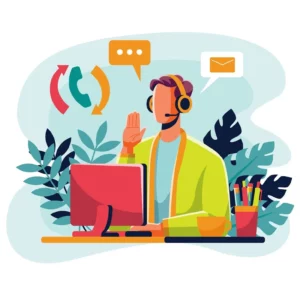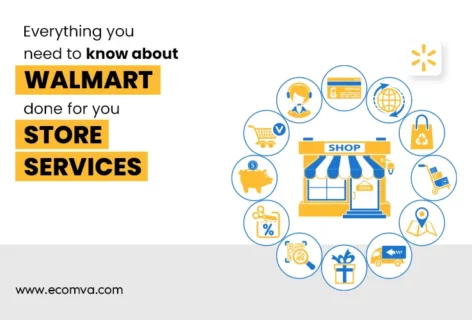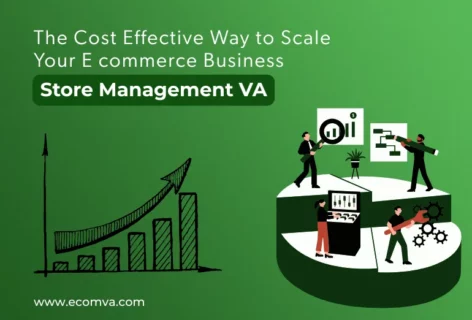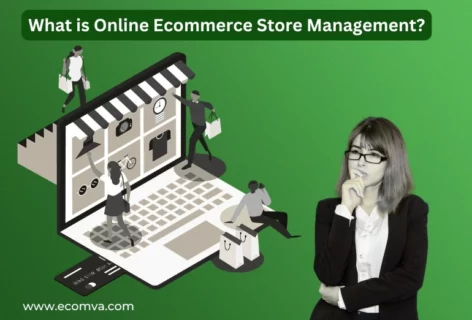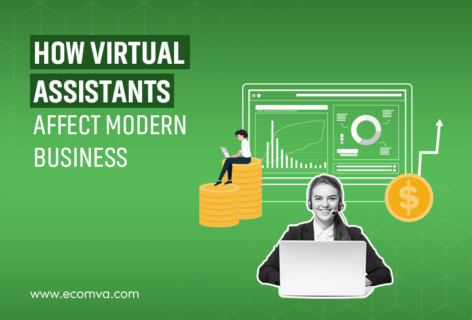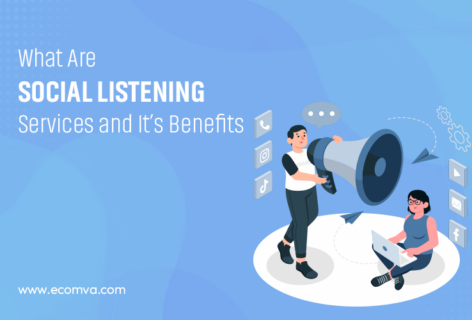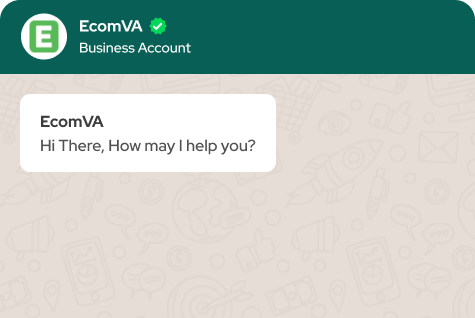What Is A Virtual Assistant For Amazon Sellers? Learn How To Find One
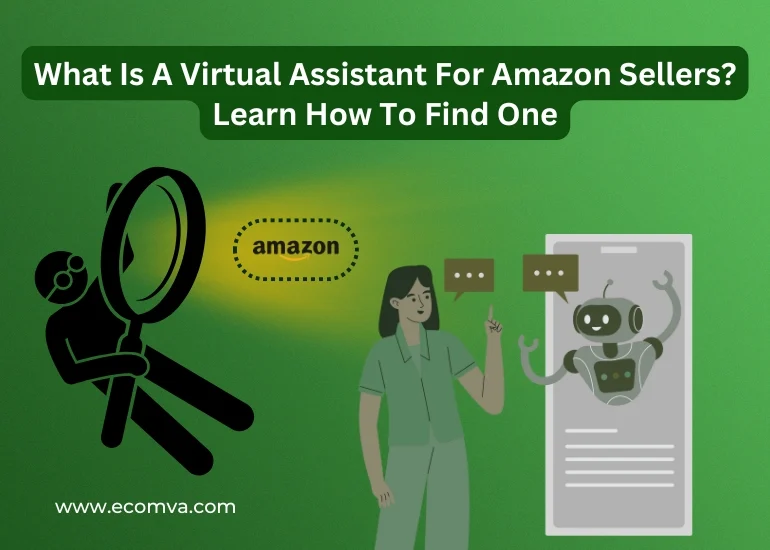
If you’re managing your Amazon store alone, chances are your “quick check-in” on Seller Central turns into two hours of updating product titles, chasing return cases, and fixing suppressed listings. Meanwhile, new product research is on hold. Your PPC reports are piling up unread. A customer message from three days ago is still sitting unanswered. That’s exactly why more sellers are hiring a virtual assistant for Amazon sellers, someone trained to take over the operational grind so you can focus on strategy, not spreadsheets.
In this blog, we’ll break down exactly what an Amazon VA does, how to find the right one, and how they can transform the way you run your store.
What Exactly Is a Virtual Assistant for Amazon Sellers?
A virtual assistant for Amazon seller is a remote professional who specializes in handling daily operational tasks on your Amazon account. They work from anywhere in the world and can be full-time, part-time, or project-based.
Their job is to lighten your load by helping with things like:
- Listing uploads and edits
- FBA shipment coordination
- Responding to customer messages
- Processing refunds and returns
- Inventory tracking and low-stock alerts
- Competitor monitoring
- Backend keyword updates
While some VAs are generalists, the best ones are trained in Seller Central and have experience with tools like Jungle Scout, Helium10, and Data Dive.
What Makes a Virtual Assistant Different From a Full-Time Hire?
| Feature | In-House Employee | Freelance Amazon VA |
|---|---|---|
| Location | Office-based | Remote (worldwide) |
| Cost | High (salary + benefits) | Flexible and cost-efficient |
| Training Required | Usually, yes | Often already Amazon-trained |
| Contract Type | Fixed, ongoing | Hourly, project, or monthly |
| Scaling Team | Slower | Faster and lower risk |
A freelance Amazon VA gives you more flexibility. You can scale up during peak seasons and scale down when business slows—without worrying about payroll or HR.
Core Tasks a Virtual Assistant Can Handle for Amazon Sellers
A skilled virtual assistant for Amazon seller doesn’t just “support” your store — they handle the hands-on work that keeps it functioning day to day. Here’s what they’re actually doing behind the scenes:
-
Set Up and Manage FBA Shipments
Create FBA shipping plans, input box-level dimensions, coordinate with your prep centre or supplier, and ensure proper labeling and packaging. They also follow up on any shipment issues (e.g. receiving discrepancies or delays).
-
Track Inventory and Forecast Reorders
Monitor SKU-level stock levels inside Seller Central, set custom low-stock thresholds, and use reorder spreadsheets or tools like SoStocked to notify you when it’s time to restock based on sales velocity.
-
Process Returns and Handle Refund Cases
Log in to the Returns section, follow up on return authorizations, check refund reasons, and open cases for reimbursements when products aren’t returned or scanned back in properly.
-
Update Titles, Bullet Points, Descriptions, and Backend Keywords
Optimize your listings using keyword data from Helium10 or Data Dive. This includes rewriting copy, inserting new keywords, and running A/B tests (if available through Brand Registry).
-
Monitor Reviews and Request Removals
Check for negative reviews daily using tools or manual tracking, submit removal requests for abusive or irrelevant feedback, and track product rating trends across key ASINs.
-
Run Keyword Research Using Helium10
Use Helium10’s Magnet and Cerebro to find relevant keywords for each product, then sort by search volume and competition score. These insights directly inform listing optimizations and PPC campaigns.
-
Create and Optimize Product Listings with Images and Variations
Upload new ASINs, input parent-child relationships, assign category nodes, format bullet points, and submit images in required dimensions. They may also work with designers to upload final creative assets.
-
Send Weekly Performance Reports
Compile simple reports with metrics like inventory levels, ASIN health, listing changes made, refund volume, and pending case status — so you always know what’s happening.
-
Manage Amazon Case Logs and Seller Support Communication
Open, track, and escalate support cases when products get stranded, suppressed, or delayed. They write and follow up on Amazon messages until the issue is resolved.
These tasks fall under the umbrella of professional Amazon VA services. With proper training and SOPs, your VA becomes a reliable part of your team, keeping operations smooth and issues under control.
Signs You Need to Hire an Amazon Virtual Assistant
You may not realize it yet, but you might already need help. Here are the signs:
- You’re missing shipment cut-off times
- Refund requests are piling up unanswered
- Your product listings haven’t been updated in months
- You spend more time fixing issues than growing your store
- You’re still doing manual keyword research or copywriting
- You have no bandwidth to launch new ASINs
At this point, bringing in a trained professional isn’t optional. It’s a smart investment.
That’s why many sellers turn to EcomVA. Our team of experienced VAs know how to handle the repetitive but critical tasks—from shipping plans to listing optimizations—so your store can operate without bottlenecks.
How to Find the Right Virtual Assistant for an Amazon Seller
There are three main ways to find reliable talent:
- Use Agencies (like EcomVA)
If you don’t want to vet and train from scratch, agencies offering Amazon VA services are the fastest way to hire trained support. EcomVA assigns VAs based on your actual store needs.
- Look for Freelancers
Use platforms like Upwork, Freelancer, or OnlineJobs.ph to find a freelance Amazon VA. You’ll need to screen them for Seller Central skills and conduct your own test tasks.
- Ask for Referrals
Join ecommerce Facebook groups or seller communities. Someone in your network may already work with a reliable VA and can refer them.
Wherever you find your VA, make sure they understand Amazon’s systems. A general VA won’t be able to handle the specifics unless trained.
Questions to Ask Before You Hire
Here are specific questions to ask before you hire Amazon virtual assistant support:
- Have you managed an Amazon FBA account before?
- Can you create FBA shipment plans and manage inventory tracking?
- How do you handle return/refund processes?
- Which tools do you use for keyword research?
- Can you show examples of listings you’ve optimized?
- Are you comfortable submitting and managing cases in Seller Central?
- Have you worked with A+ Content or done backend keyword updates?
Asking these questions will tell you quickly whether the candidate knows what they’re doing.
How to Set Up a Workflow with Your New VA
Once you decide to hire Amazon virtual assistant, you need a simple system in place to ensure success. Here’s what that looks like:
- Access Control: Create a separate user profile inside Seller Central with limited permissions.
- Training: Share SOPs (standard operating procedures) or Loom videos of key workflows.
- Task Management: Use Trello, Asana, or ClickUp to assign, track, and review tasks.
- Daily or Weekly Updates: Ask for short reports or summaries.
- File Sharing: Keep product info, creatives, and past listing files in a shared Google Drive.
Example Onboarding Checklist:
| Task | Format/Tool |
|---|---|
| Product Info Sharing | Google Sheets or Drive |
| Task Assignment | Trello / ClickUp |
| SOP Access | Loom videos / Docs |
| Reporting | Shared weekly template |
| Communication | Slack / Email |
A smooth onboarding saves you weeks of back-and-forth.
Can Virtual Assistants Also Support Shopify or Multi-Channel Selling?
Yes, many VAs also help with ecommerce platforms outside Amazon. If you’re running a Shopify store, you can often train an Amazon VA to become your Shopify virtual assistant as well.
They can:
- Upload new products
- Sync inventory between Amazon and Shopify
- Track multi-channel fulfillment orders
- Assist with app integrations and updates
If you’re expanding beyond Amazon, hiring someone with experience in both platforms saves you the hassle of building two separate teams.
Why More Sellers Are Outsourcing Day-to-Day Amazon Work
Hiring full-time staff isn’t always practical, especially for lean ecommerce teams. That’s why outsourcing has become the go-to strategy.
According to Jungle Scout’s Seller Report, over 32% of successful sellers now outsource Amazon store tasks to third-party professionals or virtual assistants.
The benefits are clear:
- Reduced workload without sacrificing quality
- Faster turnaround on listing creation and updates
- Higher output with fewer operational delays
At EcomVA, we help sellers outsource Amazon store tasks safely and efficiently, with ready-to-go virtual assistants trained specifically for Amazon workflows.
FAQs
1. How long does it take to train a new Amazon VA?
If you hire from scratch, it can take 2–3 weeks to onboard. If you use trained professionals like those from EcomVA, they’re ready to go in 1–3 days.
2. Can a freelance Amazon VA handle PPC ads?
Some can, but not all. If this is a priority, ask about specific PPC platform experience during the interview.
3. Do I need to give full access to my Seller Central account?
No. You can set up limited-access user permissions and only give them access to the areas they need.
4. What’s a typical hourly rate for a virtual assistant for an Amazon seller?
Rates range from $5 to $15/hour depending on location, experience, and task complexity.
5. Can a virtual assistant help with seasonal store prep?
Absolutely. Many sellers hire short-term VAs during Q4 or Prime Day to manage high-volume activities.
